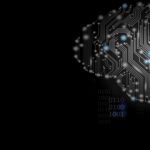Recent advancements in artificial intelligence (AI) have significantly influenced chatbot technologies. As of 2024, 58% of businesses globally have adopted AI-powered chatbots for customer interactions, according to Gartner. Additionally, a report by Statista indicates that the chatbot market is expected to grow to $1.25 billion by 2025. With this growth, expectations from chatbot systems have also risen. A Chatbot App Development Company must now deliver smarter, more adaptive, and context-aware conversational agents.
To meet these growing demands, reinforcement learning (RL) has emerged as a powerful approach. Unlike traditional rule-based systems, RL enables chatbots to learn optimal behavior through continuous feedback from user interactions. This article provides a technical exploration of how reinforcement learning can enhance chatbot performance, ensuring adaptive, efficient, and user-centered dialogue systems.
Understanding Reinforcement Learning
Reinforcement learning is a subfield of machine learning. It focuses on how agents should take actions in an environment to maximize cumulative reward. Key components include:
- Agent: The decision-making system (chatbot).
- Environment: The conversation context or platform.
- State: The current status of the environment (e.g., user query).
- Action: A possible response or decision the agent can make.
- Reward: Feedback indicating the quality of the agent’s action.
In chatbot applications, RL allows the bot to iteratively improve based on real-world usage and outcomes.
Limitations of Traditional Chatbot Architectures
Before RL, chatbot development often relied on rule-based or supervised learning models. These systems faced several limitations:
- Static response mechanisms
- Inability to learn from new interactions
- Limited personalization
- High maintenance for rule updates
Supervised models can generalize better but still lack the dynamic adaptability of RL-based systems. They are trained on historical data, making them less effective in evolving conversations.
How Reinforcement Learning Enhances Chatbot Performance
1. Adaptive Learning from Real-Time Interactions
RL enables chatbots to learn directly from user conversations. Instead of relying solely on pre-labeled datasets, bots adjust behavior based on rewards from user satisfaction.
Example: If users respond positively (low dropout, high engagement), the bot reinforces that dialogue strategy. Negative feedback leads to alternative strategies.
2. Optimizing Multi-Turn Dialogues
Handling conversations across multiple turns is complex. RL models can optimize such sequences by predicting the most effective dialogue path.
- Reduces context loss across turns
- Improves user satisfaction with coherent responses
- Maintains dialogue flow
Table: RL vs. Traditional Models in Multi-Turn Dialogues
|
Feature |
Traditional NLP Bot |
RL-Based Bot |
|
Context Tracking |
Limited |
Dynamic |
|
Feedback Utilization |
Static |
Real-Time |
|
Learning Capability |
Offline |
Online (continual) |
|
Response Personalization |
Minimal |
High |
3. Minimizing Uncertainty and Ambiguity
Chatbots frequently encounter ambiguous queries. RL helps select optimal responses by exploring different options and choosing those with higher reward signals.
- Reduces generic or irrelevant replies
- Learns to ask clarifying questions
Example: For the query “Book me something for dinner,” an RL chatbot might learn to ask, “Do you prefer Indian, Chinese, or Italian cuisine?”
4. Reward Shaping with User-Centered Goals
In RL, the design of the reward function is critical. It aligns chatbot goals with user satisfaction metrics:
- Task completion
- Response time
- Customer satisfaction ratings
- Escalation frequency
Fine-tuning these reward structures leads to user-aligned dialogue strategies.
Applications of RL in Chatbot Use Cases
RL techniques are being applied in diverse chatbot use cases across industries:
- Customer Support: Adaptive escalation and problem resolution
- Healthcare: Personalized health information and appointment scheduling
- Education: Dynamic tutoring systems based on student queries
- Finance: Real-time query handling with compliance checks
Real-World Example: Alibaba developed a reinforcement learning-based customer service bot. It achieved a 78% accuracy in handling queries without human intervention.
Technical Approaches to Implement RL in Chatbots
Several reinforcement learning algorithms are applicable to chatbot training:
- Q-Learning: Suitable for discrete action spaces
- Deep Q-Networks (DQN): Uses neural networks to approximate Q-values
- Policy Gradient Methods: Directly optimize the policy (e.g., REINFORCE)
- Actor-Critic Methods: Combine value-based and policy-based learning
Workflow Overview:
- Define the state and action space
- Construct the reward model
- Use simulation or real data for training
- Regularly update policy based on collected feedback
Challenges in RL-Based Chatbot Development
Despite its advantages, RL in chatbots presents unique challenges:
- Sample inefficiency: Requires many interactions to learn
- Exploration vs. exploitation trade-off
- Defining meaningful reward functions
- Ethical concerns in user experimentation
Addressing these requires hybrid models, combining RL with supervised learning or using simulated environments for training.
Future Trends and Outlook
Research and development in RL for conversational agents continue to expand. Key trends include:
- Hybrid Models: RL combined with pre-trained language models (e.g., ChatGPT with fine-tuned RL)
- Simulated Training Environments: Faster learning without real users
- Federated Learning: Decentralized RL for privacy-preserving chatbot training
- Explainable RL: Transparent decision-making in chatbot responses
A competent Chatbot App Development Company must now stay updated with these evolving trends to stay competitive.
Conclusion
Reinforcement learning represents a significant step forward in chatbot development. It provides adaptive, context-aware, and efficient dialogue systems capable of continuous improvement. By learning directly from user interactions and optimizing long-term engagement, RL-trained chatbots outperform static or rule-based systems.
While challenges in implementation persist, the long-term benefits of RL outweigh the drawbacks. For any Chatbot App Development Company aiming to build next-generation conversational agents, reinforcement learning is no longer optional. It is an essential component of intelligent, user-first chatbot systems.
Frequently Asked Questions (FAQs)
1. What is the main advantage of using reinforcement learning in chatbots?
Reinforcement learning enables chatbots to improve performance through continuous feedback. Unlike rule-based systems, RL allows chatbots to adapt dynamically to user interactions and optimize for long-term goals like task success or user satisfaction.
2. How does reinforcement learning differ from supervised learning in chatbot training?
Supervised learning relies on labeled datasets and learns from predefined input-output pairs. Reinforcement learning, on the other hand, learns from trial-and-error interactions, where the agent receives rewards or penalties based on its actions in a live environment.
3. Can reinforcement learning be combined with other AI techniques in chatbot development?
Yes, hybrid approaches are common. For example, pre-trained language models like BERT or GPT can be combined with reinforcement learning to improve response quality and dialogue management, especially in multi-turn conversations.
4. What are the key challenges in applying reinforcement learning to chatbots?
- Designing effective reward functions
- Ensuring ethical user experimentation
- Managing exploration vs. exploitation
- Handling sparse feedback in real-world scenarios
- Achieving sample-efficient learning
5. Is reinforcement learning suitable for all types of chatbot applications?
Not always. RL is most beneficial for complex, multi-turn, goal-oriented conversations where ongoing learning improves outcomes. For simple FAQ or command-based bots, rule-based or supervised learning may suffice.
- How Reinforcement Learning Improves Chatbot Performance
- Discover how reinforcement learning enhances chatbot performance with adaptive learning, real-time feedback, and improved multi-turn dialogue handling.
- Reinforcement Learning, Chatbot App Development Company, Chatbot Performance, Conversational AI, Machine Learning in Chatbots, AI Chatbots, NLP Chatbot Development, Adaptive Chatbot Systems, Multi-turn Dialogue Management, Deep Learning for Chatbots, Customer Service Automation, Intelligent Virtual Assistants, Q-Learning, Policy Gradient Methods, Chatbot Optimization Techniques
Related posts:
 Can Generative AI Truly Replace Human Creativity in the Future?
Can Generative AI Truly Replace Human Creativity in the Future?
 Smart Contracts 2.0: The Next Evolution in Blockchain Technology
Smart Contracts 2.0: The Next Evolution in Blockchain Technology
 Understanding AI Inference as a Service: How It Powers Smart Applications
Understanding AI Inference as a Service: How It Powers Smart Applications
 Artificial Intelligence Development Services: What You Need to Know
Artificial Intelligence Development Services: What You Need to Know
 Global Pet Food Packaging Market Size, Trends, and Forecast to 2030
Global Pet Food Packaging Market Size, Trends, and Forecast to 2030
 Mindfulness Meets Machine: How Enlightenment AI Blends Ancient Wisdom with AI
Mindfulness Meets Machine: How Enlightenment AI Blends Ancient Wisdom with AI
 How Quantum Computing Companies Are Reshaping Artificial Intelligence
How Quantum Computing Companies Are Reshaping Artificial Intelligence
 How B2B Payments Platforms are Transforming Corporate Financial Transactions
How B2B Payments Platforms are Transforming Corporate Financial Transactions







